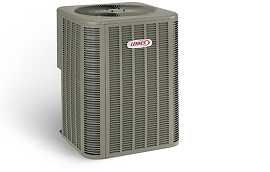The air conditioning industry has evolved a great deal in recent years. The technology and innovations have been largely driven by numerous factors including regulations limiting emissions and energy expenditure, advancements in scientific developments and new devices. All of these factors have combined to propel heating and air conditioning in the direction of user ease and energy efficiency. In recent years, there have been several distinct trends in air conditioning. 
New Approaches to Attic Insulation:
Proper attic insulation is essential to reduce the cooling and heating costs of a home by blocking outdoor temperatures from entering the living space. In the attic space, where your ducts are located, the atmosphere is dirty and contains numerous air pollutants. In the hot summer weather the temperature in your attic can reach the triple digits. As the cooled air travels through the ducts to living areas in your home, the hot attic atmosphere can temper the air in the ducts, increasing the temperature, which forces your system to work even harder.
Insulation can mitigate this by reducing the level of heat absorbed in the attic space and ducts. There are two new approaches to insulating attic spaces. The first method requires using fiberglass insulation to cover the attic floor. This should be at least twelve inches thick to absorb the heat radiating from the roof before it can enter the ceiling of the room below and impact the air ducts.
The second method involves radiant insulation, where metal sheeting is stapled to the underside of the roof. This acts as a physical barrier to keep the heat trapped as far from the living space as possible. These two methods combine to provide optimum insulation, which is far more effective and efficient than insulation options in the past.
Multiple Thermostats and Zoning:
Zoning has become a more common feature on newer HVAC systems. This feature is an excellent way to reduce energy costs and improve efficiency. Zoning involves creating separate areas in the home with independent thermostats. This allows you to cool or heat different areas as required instead of the entire home.
Zoning can be added to existing systems with the installation of motorized discs within the air ducts. The air flow is either blocked or allowed depending on the movement of the discs. This allows heated or cooled air to be directed to where it is needed. For example, you can keep your living areas at a comfortable temperature during the day, without heating or cooling sleeping areas, which will not be used until the evening. You can also set your preferred temperatures since you may like to keep your bedrooms a few degrees cooler than your living areas for a comfortable night’s sleep.
WiFi and App Compatibility:
Almost every company and device now seems to have a compatible App and air conditioning is no different. Many models now have WiFi and App compatibility. This allows you to control the settings of your system even if you are not at home. This is the perfect solution for those who have a very flexible schedule that varies. While you may not be able to benefit from setting timers on your thermostat, an App allows you to turn on your heating or air conditioning when you are on your way home. This means that when you arrive, the temperature has reached your optimum comfort level without wasting energy.
